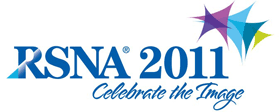
Abstract Archives of the RSNA, 2011
LL-CHS-MO2B
Computer-based Quantitative Modeling of Chest CT Findings in Pulmonary Hypertension and Its Association with Physiologic and Clinical Variables
Scientific Informal (Poster) Presentations
Presented on November 28, 2011
Presented as part of LL-CHS-MO: Chest
Jesus J Caban PhD, Presenter: Nothing to Disclose
Jianhua Yao PhD, Abstract Co-Author: Royalties, iCAD, Inc
Ulas Bagci PhD, MSc, Abstract Co-Author: Nothing to Disclose
Daniel Joseph Mollura MD, Abstract Co-Author: Nothing to Disclose
To evaluate the effectiveness of computer-based quantitative measurements of chest CT and its associations with clinical values in adults with pulmonary hypertension in sickle cell disease (SCD).
An expert radiologist annotated 29 CTs indicating regions as normal, ground glass (GGO) or linear interstitial opacities. The resulting 6,020 ROIs (blocks of 16 x 16 pixels, 2,730 normal, 587 GGO, and 2,967 fibrotic) were used by a computer program to learn the statistical properties of each pattern. First- and second-order textural features were extracted from each ROI to learn the individual statistical properties. After the training step, the automatic identification model showed a 92% specificity and 74% sensitivity at detecting the patterns. Figure 1a shows some of the computer results. 83 CTs of patients with SSD were automatically analyzed to estimate the percentage of lung volumes affected by each pattern. The quantitative CT measurements were then correlated with clinical and physiological values (obtained within a week of the image study) to learn the associations between image and clinical variables.
Quantitative CT features correlated with many physiological variables including the mean pulmonary arterial pressure (mPAP, R=0.379, p<0.002), pulmonary pressure (PP, R=0.35, p<0.004), and pulmonary vascular resistance index (PVRi, R=0.25, p<0.04) . Figures 1b and 1c show some of the associations between image and physiological values. We found that GGO had a higher correlation with expiratory reserve volume (ERV, R=-0.43, p<0.001) than fibrosis (R=-0.23, p<0.037). The pulmonary capillary wedge pressure (PCWP) was found equally correlated with GGO and fibrosis (R=0.29 vs. R=0.27 respectively).
Computer modeling can measure extent of GGO and fibrotic interstitial thickening for precise quantitative and can be validated by correlating with physiologic measurements of pulmonary hypertension.
Quantitative modeling of physiologic and clinical variables in pulmonary hypertension can potentially assist radiologists in quantifying pulmonary hypertension accurately in clinical practice.
Caban, J,
Yao, J,
Bagci, U,
Mollura, D,
Computer-based Quantitative Modeling of Chest CT Findings in Pulmonary Hypertension and Its Association with Physiologic and Clinical Variables. Radiological Society of North America 2011 Scientific Assembly and Annual Meeting, November 26 - December 2, 2011 ,Chicago IL.
http://archive.rsna.org/2011/11013607.html

